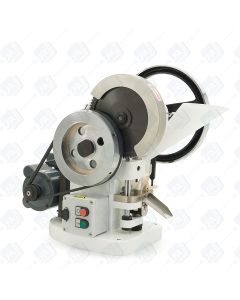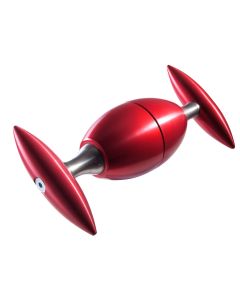Breaker Lines - Good or Bad?
The scoring of tablets with breaker lines has long been implemented by pharmaceutical manufacturers mainly to prevent stress fractures, but also for more considerations that are primarily aesthetic. Bisect score lines may present a challenge to manufacturers as they can affect the tablet's band thickness, cup depth and intended hardness. As the tablet size increases or changes, so do the size and type of bisects that may be placed. The Tablet Specification Manual (The TSM), published by the American Association of Pharmaceutical Scientists describes seven types of breaker line. These range from the most functional bisect, called a G-type, which is very sensitive to pressure placed on it by humans, to the least functional or H-Type which is considered a cosmetic bisect.
Tablet Scoring
A score or breaker line is useful for consumers, for example, who are changing from branded to generic tablets and who may need to halve the tablets to ensure consistent dosage between the two types. This situation is becoming more frequent as doctors and even insurance providers recommend patients split the tablet to ensure correct dosage. Being able to halve a tablet may also provide some cost savings for the consumer.
Scoring has, unfortunately, become somewhat controversial as it may promote some confusion between the generic drug and the reference or branded drug. Scoring can also be implemented as an aesthetic marking to a drug rather than the practical means of breaking the tablet in two. Scoring can enhance the competitiveness of a product, but also raise the issue of equivalence between branded and non-branded drugs.
Zapisz się do naszego newslettera
Comments have been made in the profession that scoring may encourage patients to be non-compliant with prescriptions if the option to break the tablet in half is offered. The FDA conducted its own research of this topic which revealed that scoring may also lead to inconsistencies in the content, weight, dissolution and disintegration of the tablet. For these reasons, the FDA has established a set of guidelines to provide consistent criteria against which scored tablets should be evaluated. The aims being to:
(a) provide harmonized approach to the chemical and manufacturing process
(b) ensure consistency
(c) provide information through product label.
The guidelines and criteria to be adopted when providing scored tablets can be summarized as follows:
- The drug dosage should not be below the indicated dose in the approved labelling.
- Tablets should be safe to handle and not pose risk of unintended drug exposure.
- Drugs that are for modified release should not have scoring features.
- Split tablet bottles and caps should meet the stability requirements for 90-day period at 25°C or – 2°C and 60 5% relative humidity.
- Split tablet portion should be equivalent to the whole tablet with equivalent strength. A risk assessment should be conducted to justify the score criteria for the product.
- Scored tablets should be tested using a representative sample of patient population to ensure that the patients can split the tablet as indicated in the label.
- Scoring configuration of generic tablet should be the same as that of the reference tablet.
- A new study on the splitability should be provided before any product change.
Many existing tablets feature an E-Type or standard bisect, but may not split evenly when an individual attempts to split them into equal doses. In such cases, the manufacturer will need to explore moving to either a C-, D- or G- type of score line. It should be recognized that making this change may result in the need to change the size of the letters or numbers on the tablet. Under existing guidelines, the FDA does not consider either of these changes significant, so long as there is no change in the code itself. Each manufacturer must determine which bisect best fits the product. The TSM offers more detailed information concerning the differences between standard concave, deep concave and flat faced bevel edged tablets. Especially important is the position of the bisect on the top of the tablet.





